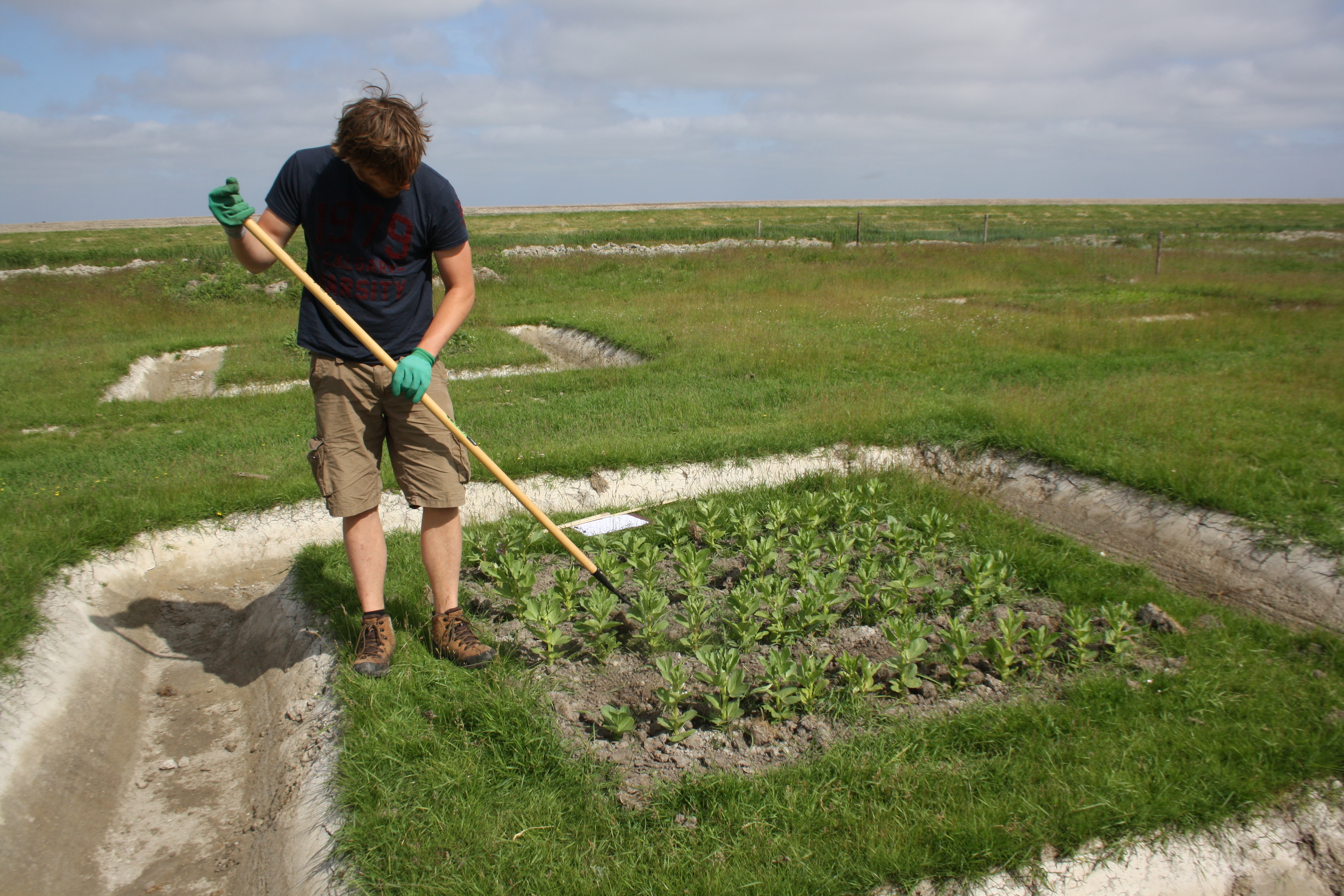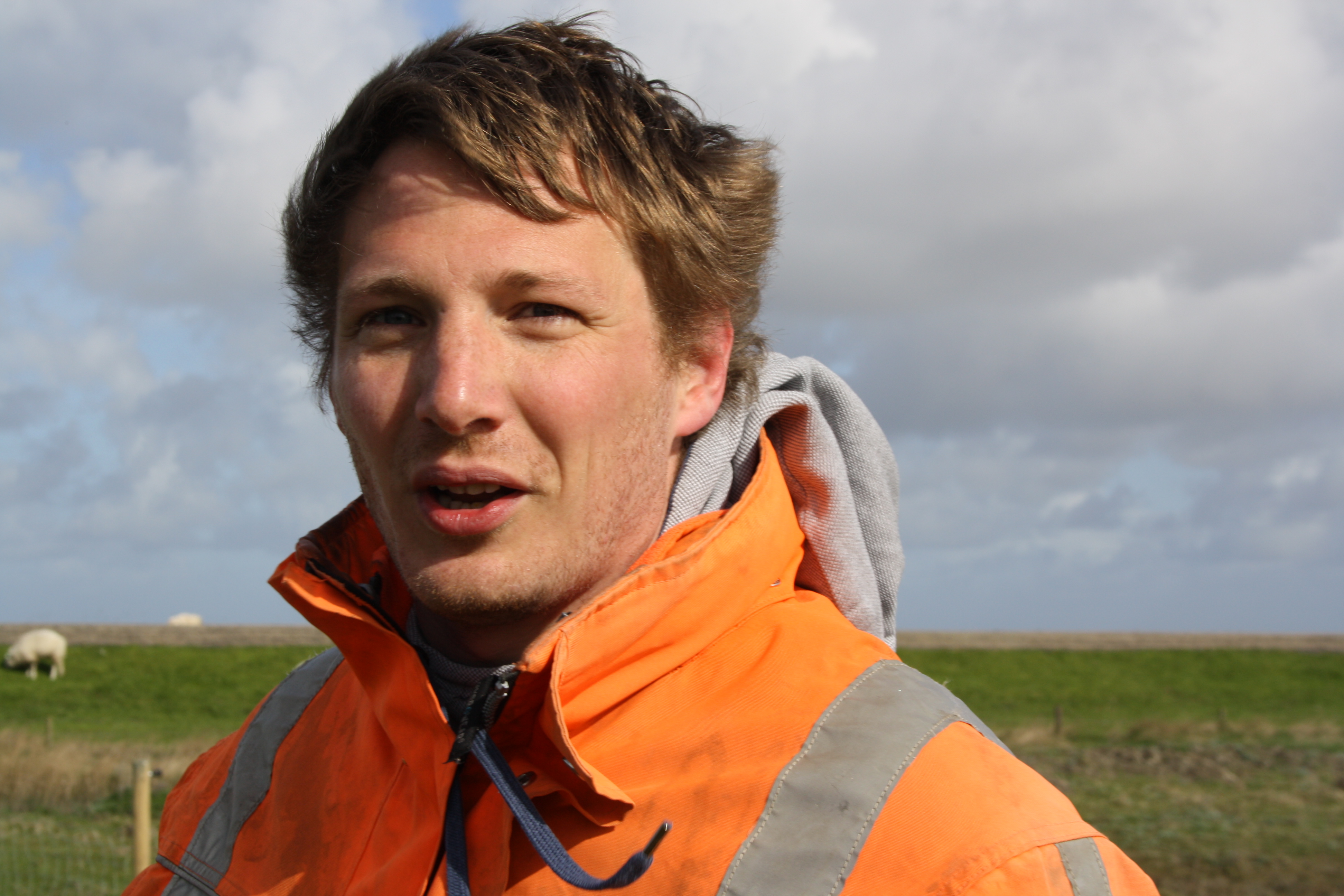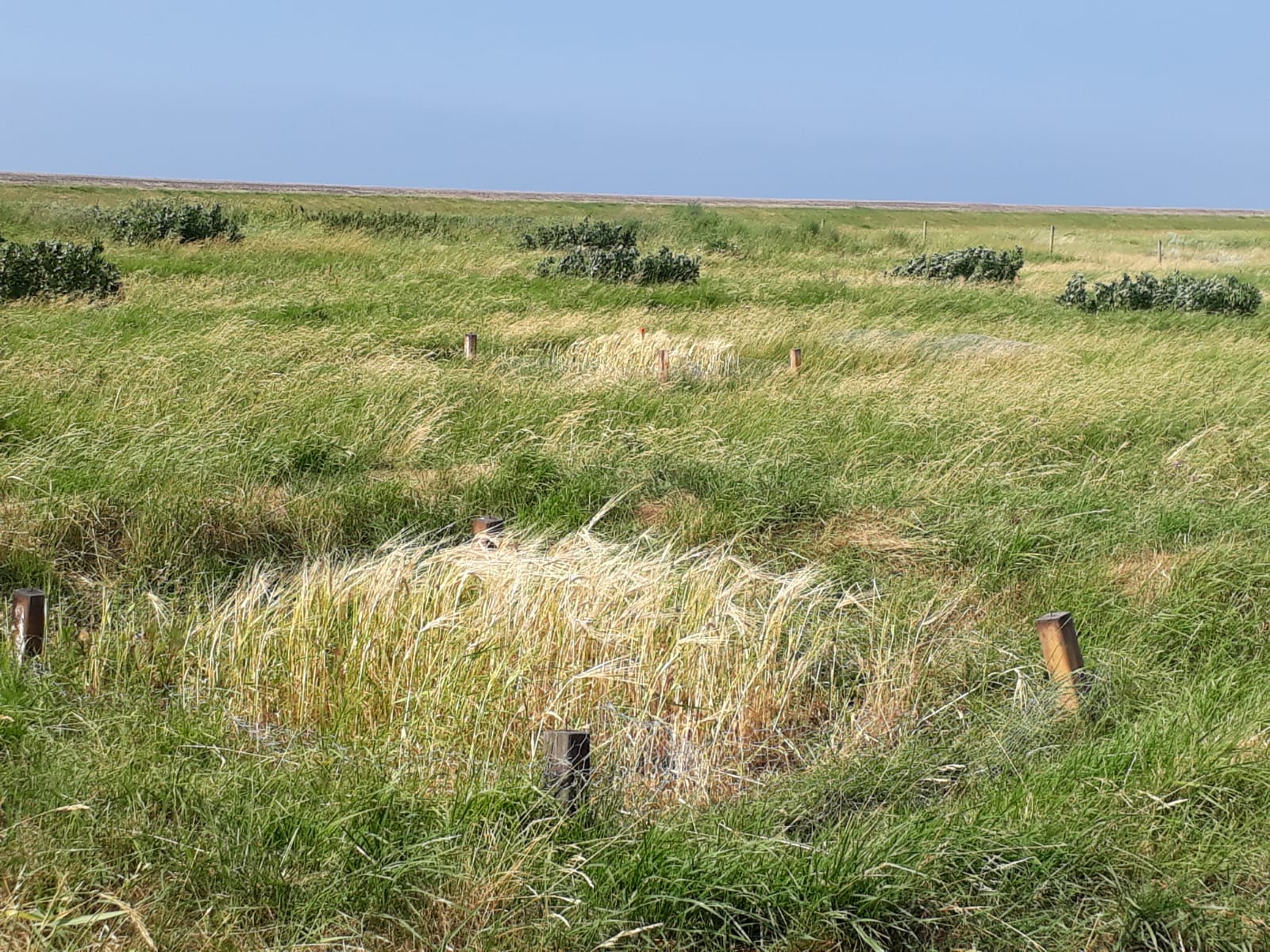Two thousand years of horse beans on the salt marshes
More than 2,000 years ago, people were already eking out a living on the salt marshes. How did they do it? What did the inhabitants of the wierden and terpen (dwelling mounds) of the Northern Netherlands eat? And what crops did they grow? Mans Schepers, an archaeologist with a special interest in agricultural crops, is studying the interaction between humans and the landscape.
Text: Fenneke Colstee-Wieringa, Communication University of Groningen
‘I see a field of barley before me. No charred grains,’ says Mans Schepers (1983), revealing a handful of blackened barley grains dating to 600 BC. An archaeologist like Schepers needs to have a good imagination, as he wants to know what plant remains can tell us about people’s lives in ancient times. It comes in handy that he has always been interested in wild plants. Despite this interest, he decided not to study biology, which was a good choice in hindsight. ‘As part of the Bachelor’s in Archaeology, we followed a course unit in palaeobotany given by René Cappers. That’s when the spark was kindled: the interaction between ecology and humans – over thousands of years – was what excited me most.’ Schepers earned his PhD in Archaeobotany (cum laude) and, in 2015, received a Veni grant for his research into arable farming in salt marshes.
Dwelling mounds
These elevations in the landscape that were inhabited for thousands of years still exist today. After many years of research, Schepers now has a much clearer idea of how people managed to survive on the Northern Netherlands’ salt marshes from 1,000 to 2,500 years ago. For example, he studied how the inhabitants of these dwelling mounds in Groningen and Friesland cultivated the tidal marshes around their settlements – without the use of dykes. ‘The conditions on the salt marshes are not normally associated with agriculture,’ he says. ‘But, in an area that was inhabited from 600 BC to 1000 AD, if you look carefully, you can still find cereal grains all over the place. More even than marsh samphire, which is a typical marsh plant.
People and landscape
What we really want to know is: how did people survive in this landscape? People settle in an area, but what then? The trick is to try to re-think the situation from their perspective. This approach means that you are not tied to a specific region or period. The historical interaction between humans and the landscape is fascinating and also provides a link to the present. You could call this approach the “Groningen school”, and it’s a bit of a break from standard archaeobotanical thinking. At conferences, I notice that many foreign colleagues prefer to focus on a certain region or period. On a conceptual level, I don’t think that’s all that interesting.’
Field trips
Some time ago, Schepers himself switched from the Institute of Archaeology to the Centre for Landscape Studies, led by Professor Theo Spek, precisely in order to be able to develop his ideas about this interaction between humans and the landscape in greater depth. There, under the roof of the Institute for Art History and surrounded by books, boxes, bags and samples of plant material, he tells his story. ‘I do pretty much the same work here, but with different accents. I now have a good excuse to head out into the field even more often. Another great thing about this place is that we organize a lot of field trips for the students. You can’t really get to know a landscape in a lecture hall or behind a microscope. That being said, it is clearly also important and interesting for them to be able to identify seeds and pollen grains.’
Form a picture
Unfortunately, no field work is required for this interview. The trial crops that Schepers grows on the salt marshes year after year have already been harvested for this season. The archaeologist is back inside, where he counts his beans. That’s what makes his approach so special: Schepers is trying to form a picture of what it was like to live on the salt marshes. ‘It is not that hard to find plant remains, but discovering how the plants were used is hard. For example, we know that no blackberries or hazelnuts grew on the salt marshes, so what did they eat then? How did they get their vitamin C, proteins and carbohydrates? How did they obtain oil for lamps and fibres for clothing and rope? The answer is marsh samphire, legumes, grains, linseed oil, hemp and sheep.
Hemp and pots
Paradoxically, the analyses of the wierden and terpen were ‘hindered’ by too much well-preserved plant material, particularly from manure piles and cesspits. They contained plenty of plant remains, but some important ones were missing, such as hemp seeds, and broad beans are probably also under-represented,’ he says. ‘So maybe we need to look elsewhere as well. Not all plant material ends up in the same place in our homes of today either. By studying more samples in more detail than usual, my colleagues and I also learned more about hemp. We found that the use of hemp in the Northern Netherlands increased from 800 AD. This was a new discovery. Together with other colleagues, including Daan Raemaekers, director of the Groningen Institute of Archaeology, I’m trying to discover why pollen and seeds from a Neolithic landscape in the Flevo polder tell a different story about food supply and preparation than the analysis of the cooking vessels themselves. Finding the links between various different sources is one of the greatest challenges in contemporary archaeology.’
Counting beans
It has been established that marsh dwellers cultivated beans and barley, but Schepers wanted to know how. He chose an unorthodox research method by taking to the plough himself. He received horse beans from a Frisian trader in old plant varieties. These plants, similar to broad beans, were cultivated as long as 2,000 years ago. He sowed the beans on three trial plots in the salt marshes: one plot enclosed by an embankment, one by a ditch and one unprotected plot. ‘It was hard work for me and my student assistants. First there was the sowing, weeding and harvesting, and then the measurements: more than 700 plants with x pods and an average of 4 beans per pod. And we had to hull and count them all. Later, we wised up enough to count only the pods. Over the years, we have harvested and counted tens of thousands of beans. Among other things, we discovered that the saltier the soil, the smaller the bean plants.’
Outdated
It is typical of Schepers that he is devoting so much attention to how a salt marsh farmer could increase his yield all those centuries ago. ‘Those people were just as smart as us. They managed to build a life under very challenging conditions. Just like modern farmers, people would have known which areas of land were suitable for a certain use and adapted their plans accordingly. It is a myth that humans live in balance with nature; it has always required constant adaptation.’ In an old book, he shows a picture from around 800 AD of a farmstead on a dwelling mound surrounded by small fields. ‘This is outdated. Building a dwelling mound is a lot of work; you wouldn’t use it for agricultural activities that can be carried out elsewhere. Cereals were grown in fields on the salt marshes and were much larger than in this picture. Nor did sheep graze directly next to the farmhouse, but on other more suitable land. Salt marshes were not constantly flooded, no more than they are today.’
Narrow hoe
With apparently little effort, Schepers has recreated history on his experimental plots. Take the example of weeding. ‘Weeding is as old as arable farming itself. You learn very quickly. Have you tried growing broad beans? It’s best done in neat rows. We started out broadcasting our grain, but the crop was too difficult to weed. And because I used quite small fields, I had to sow the rows closer together to get enough results. So, I had a very narrow hoe made. The first ever hoe bought with a Veni grant,’ he laughs.
Exhibition
Schepers always tries to involve the regional population in his research. Together with the Hammingh café in Garnwerd and the Wierdenland museum in Ezinge, he once organized an exhibition on ‘The Wierden Menu’ (see video). He also participated in an exhibition called ‘We the Vikings’, which will be on display at the Friesland Museum from 19 October. ‘Look, we just made this,’ he says, showing an animation on his PC. A mound dwelling with cattle and fields looms up out of a salt-marsh landscape. ‘It shows how people worked together with the landscape, and not against it.’





| Last modified: | 11 May 2020 10.20 a.m. |
More news
-
16 April 2024
UG signs Barcelona Declaration on Open Research Information
In a significant stride toward advancing responsible research assessment and open science, the University of Groningen has officially signed the Barcelona Declaration on Open Research Information.
-
02 April 2024
Flying on wood dust
Every two weeks, UG Makers puts the spotlight on a researcher who has created something tangible, ranging from homemade measuring equipment for academic research to small or larger products that can change our daily lives. That is how UG...
-
18 March 2024
VentureLab North helps researchers to develop succesful startups
It has happened to many researchers. While working, you suddenly ask yourself: would this not be incredibly useful for people outside of my own research discipline? There are many ways to share the results of your research. For example, think of a...
